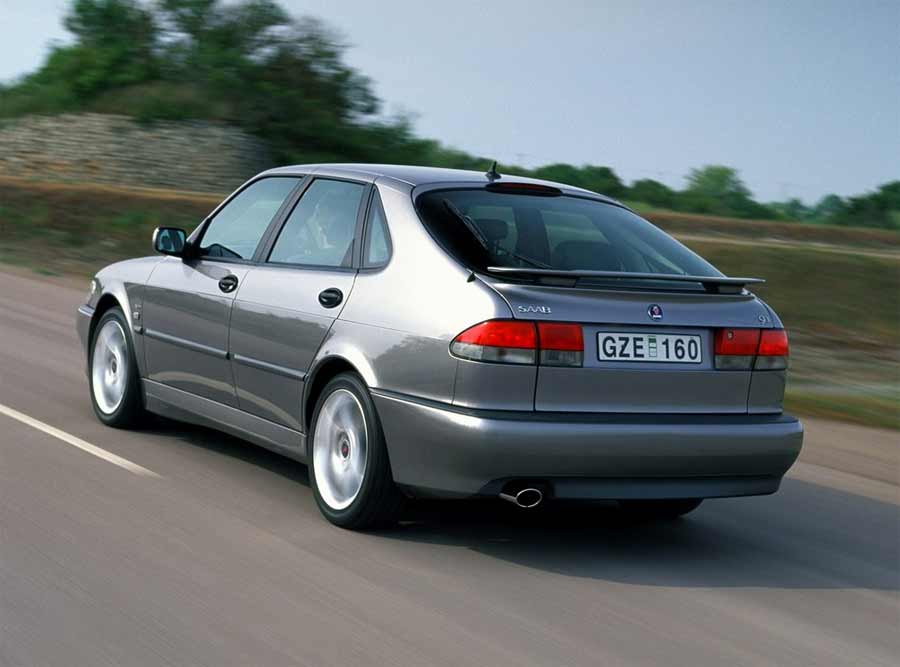The Saab 9-3, pronounced “nine-three,” is a notable compact executive car originally designed and produced by the Swedish automotive manufacturer Saab. The model made its debut in 1998, marking the beginning of its first generation, which was built on the GM2900 platform. This generation was known for its distinctive Saab styling and engineering innovations, offering a unique alternative to its competitors.
In 2003, the Saab 9-3 underwent a significant transformation with the introduction of its second generation. This iteration transitioned to the GM Epsilon platform, which was also utilized by other vehicles such as the Opel Vectra, Chevrolet Malibu, and Cadillac BLS. The second-generation 9-3 continued to build on Saab’s reputation for blending performance with luxury, featuring updated design elements and advanced technology.
After Saab’s acquisition by National Electric Vehicle Sweden (NEVS) in 2013, the company briefly resumed production of the 9-3 sedan during 2013 and 2014. Although only a limited number of these models were assembled, they represent a final chapter in the 9-3’s storied legacy before Saab’s production halted.
Saab 9-3 – First generation (1998–2003)

The first-generation Saab 9-3, which launched in 1998 for the 1999 model year, was a significant evolution from the Saab 900 (NG), often referred to as the ‘OG’ (old generation) 9-3. Internally known as the body style 9400, this model represented a major update with around 1,100 modifications over its predecessor. These updates included a revised suspension for improved handling, quicker steering, and new styling cues, such as optional rear spoilers. Notably, it also featured enhanced safety with more robust A-pillar reinforcements, stronger door sills, standard side airbags, and Saab Active Head Restraints. Production of the first-generation 9-3 concluded on May 8, 2002, at the Trollhättan plant and on April 25, 2003, at the Valmet plant in Finland.
The 9-3 introduced several mechanical advancements over the Saab 900 (NG), including a new variant of the B204 engine and a switch to a hydraulic convertible roof mechanism. In the U.S. market, the 9-3 came with turbocharged petrol engines as standard, with options ranging from the “full pressure turbo” (B204L) to the more powerful “HOT” variant in the SE models. The model year 2000 saw a significant update with the transition from SAAB’s Trionic T5.5 to the Trionic 7 engine management system, which included a range of engine options like the B205E and the more powerful B205R HOT. Additionally, the first-generation 9-3 marked Saab’s entry into the diesel engine market, sharing its engine with several Opel models.
A distinctive feature of the first-generation 9-3 was the ‘Night Panel’ system, which allowed drivers to dim the instrument panel lighting, reducing distractions during night driving. Over its production run, a total of 326,370 first-generation 9-3s were built. The model was assembled at the Valmet plant in Uusikaupunki, Finland, which also produced the 9-3 Viggen in all three body styles. Valmet continued producing non-Viggen hatchbacks until 2003, totaling 7,789 hatchbacks of all models.
Saab 9-3 – Second generation (2003–2014)

The Saab 9-3X concept, which provided a glimpse into the next-generation 9-3, made its debut in January 2002 at the North American International Auto Show. Initially, the launch of the new 9-3 was scheduled to coincide with the Opel Vectra at the Frankfurt Motor Show in October 2001. However, delays led General Motors to push back the introduction. Ultimately, the second-generation 9-3 was released in July 2002 for the 2003 model year, with the convertible variant appearing in 2004 and the SportCombi following in late 2005.
The second-generation 9-3 marked a notable departure from its predecessor, most significantly by abandoning the hatchback design. At launch, the new 9-3 was offered exclusively with front-wheel drive. It was available in several body styles: a four-door saloon, a two-door convertible introduced in 2004, and an estate version known as the SportWagon, SportCombi, or Sport-Hatch, which arrived in late 2005. The 9-3 featured several new technologies, including Saab Active Head Restraints (SAHR II) to enhance safety and ReAxs rear suspension bushings to improve handling and reduce understeer.
Under the hood, the second-generation 9-3 introduced a new 2.0 L inline-four Ecotec engine from General Motors, replacing the previous Saab H / EcoPower engine. This engine came in three turbocharged variants: the 1.8T (112 kW), 2.0t (131 kW), and 2.0T (157 kW), paired with either a 5-speed manual transmission or a 5-speed ‘Sentronic’ automatic. Notably, the 6-speed manual transmission was standard on U.S. 2.0T (Vector) models, while the Linear, Arc, and Vector trims offered different engine options depending on the market. The Aero model, the top-of-the-line variant, came with additional features like a sunroof and larger wheels and was initially equipped with the 2.0T engine before receiving a 2.8 L turbocharged V6 in 2006.
The 9-3 was built on the GM Epsilon platform, shared with other models such as the Opel Vectra and later extended to accommodate additional vehicles like the Chevrolet Malibu and Pontiac G6. Exclusive features of the 9-3 included a fiber-optic electric/electronic system, the possibility of all-wheel drive (introduced in 2008 as Saab XWD), and the ReAxs rear suspension. The final 47 Saab 9-3s were assembled on February 22, 2012, by ANA, one of Sweden’s largest car dealers. These final models, known as the 9-3 ‘Independence Edition’ convertibles, included both left-hand and right-hand drive variants, with the last Saab produced being a 9-3 Aero Independence Edition TTiD convertible.

